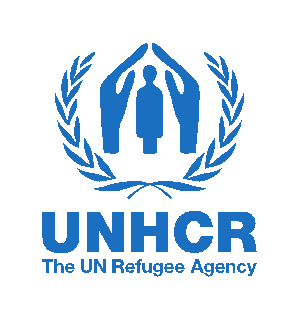United Nations Office of the High Commissioner for Refugees
In October 2020, UNHCR released a Policy on the Prevention, Risk Mitigation and Response to Gender-based Violence, reiterating the agency’s work on GBV as a protection priority and institutionalised nine core actions to advance programming and coordination across the organisation. The Policy reiterates that BGV programming is lifesaving and an institutional priority for UNHCR.
The coverage of the Policy includes all UNHCR operations and persons of concern, and it is applied in all stages of the programme cycle, throughout the displacement continuum, in emergencies and protracted displacement settings, as well as in mixed flows and onward movements, and situations of statelessness.
In March 2018, UNHCR launched an updated Policy on Age, Gender and Diversity (ADG). Building on long-standing commitments and lessons learned, the policy aims to further enable displaced and stateless women, men, girls and boys to enjoy their rights on an equal footing, and to ensure that they are better able to participate fully in the decisions that affect their lives and the lives of their family members and communities. It includes five core actions on advancing gender equality and the empowerment of women and girls.
The High Commissioner for Refugees is mandated by the United Nations to lead and coordinate international action worldwide for the protection of refugees and the resolution of refugee problems. UNHCR’s primary purpose is to safeguard the rights and wellbeing of refugees. In its efforts to achieve this objective, UNHCR strives to ensure that everyone can exercise the right to seek asylum and find safe refuge in another State, and to return home voluntarily. By assisting refugees to return to their own country or to settle permanently in another country, UNHCR also seeks lasting solutions to their plight. UNHCR’s Executive Committee and the UN General Assembly have also authorized UNHCR’s engagement with internally displaced people and people who are stateless or whose nationality is disputed.
UNHCR defines protection as “all activities aimed at achieving full respect for the rights of the individual in accordance with the letter and spirit of international law, including international human rights, refugee, statelessness and humanitarian law. Protection involves creating an environment conducive to respect for human beings, preventing and/or alleviating the immediate effects of a specific pattern of abuse, and restoring dignified conditions of life through reparation, restitution and rehabilitation.’
Working with men and boy survivors of sexual and gender-based violence in forced displacement, UNHCR (2012). Available at: http://www.refworld.org/docid/5006aa262.html
Action against Sexual and Gender-Based Violence: An Updated Strategy, UNHCR (2011). Available at: http://www.refworld.org/docid/4e01ffeb2.html
Working with Lesbian, Gay, Bisexual, Transgender & Intersex Persons in Forced Displacement, UNHCR (2011). Available rel="noopener noreferrer" at: http://www.refworld.org/docid/4e6073972.html
UNHCR Handbook for the Protection of Women and Girls, UNHCR (2008). Available at: http://www.unhcr.org/protection/women/47cfae612/unhcr-handbook-protection-women-girls.html
Sexual and Gender-Based Violence against Refugees, Returnees and Internally Displaced Persons: Guidelines rel="noopener noreferrer" for Prevention and Response, UNHCR (2003). Available at: http://www.unhcr.org/3f696bcc4.html
Guidelines for Integrating Gender-Based Violence Interventions in rel="noopener noreferrer" Humanitarian Action, IASC (2015). Available at: http://gbvguidelines.org/wp-content/uploads/2015/09/2015-IASC-Gender-based-Violence-Guidelines_lo-res.pdf
UNHCR’s Engagement on Security Council Resolutions 1612 and 1960 (Monitoring and Reporting Mechanism MRM and MARA Available at: http://www.refworld.org/pdfid/5a6edf734.pdf
Case Postale 2500. CH-1211 Genève 2 Dépôt. Suisse.
Creating safe environments and preventing, mitigating the risk, and responding to GBV is a high priority for UNHCR. Therefore, UNHCR continues to establish safeguards against such violence for all people of concern and works to ensure that response interventions are accessible for all survivors for GBV.
The implementation of UNHCR’s Policy on the Prevention, Risk Mitigation and Response to Gender-based Violence, has institutionalised UNHCR’s work on GBV through two objectives: a) risk of GBV is reduced for all PoC and b) all survivors have adequate and timely access to quality services and nine core actions to enable the three programme areas of prevention, risk mitigation and response as well as assessment, monitoring and reporting, planning, prioritisation, and resource allocation. The Policy also highlights the implementation of core global standards and guidelines including the GBV Minimum Standards.

